One of the best parts of living electric is the ability to use one-pedal driving and to recoup braking energy via electric regeneration (technically just generation). The all-new 2022 Chevrolet Bolt has a nifty one-pedal driving button to help make capturing the most energy very easy. Chevy puts the button in plain sight near the gear selector and it is locking, meaning you don’t have to hit it again when you reenter the vehicle.
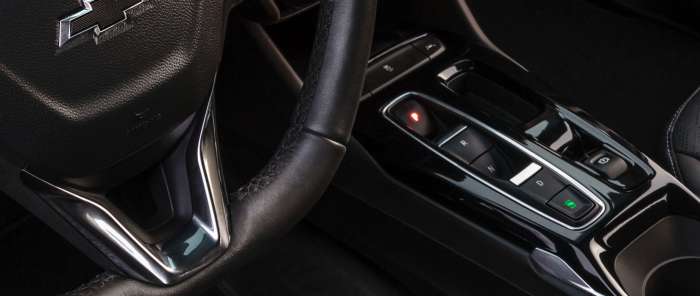
We joined a GM-sponsored Chevy Bolt Electric Utility Vehicle (EUV) event in New Hampshire this week to learn every detail possible about the new Bolt EUV. We have a more comprehensive report coming once our images are ready for publication, but wanted to highlight the brake energy recapture in this story.
Related Story: GM’s Super Cruise Elevates the Bolt EUV Electric Utility Vehicle
One Pedal Driving - What Is It?
One pedal driving is a drive mode where the EV you are in uses its electric motors aggressively to recapture energy when you slow down. You rarely need the brake the system works so seamlessly. If you prefer the old-fashioned feeling of a car that glides to a stop, the Bolt EUV has that mode too.

One Pedal Driving - Why Bother?
By enabling one-pedal driving you can capture more of the energy that would otherwise be lost to your friction brakes. And the amount is meaningful. We started up Mt. Washington with 248 miles of range estimated by the vehicle. Of course, that would be for normal driving. Gaining six thousand feet of elevation in eight miles is anything but normal. During our drive up, the Bolt’s awesome torque was on full display. We enabled Sport Mode and the Bolt EUV pulled like a coal-powered train. One of which still runs up and down the mountain every day. And boy can you smell the pollution from it at the top.
At the top of the mountain, our range estimation display was 190 miles. Heading down, we barely used the friction brakes, tapping them just twice when we were surprised by other drivers. When we got to the bottom, our range estimation displayed was 233 miles. All the way down we put energy back into our battery. There are signs all the way up and all the way down warning you to use low gear and to stop to allow your brakes to cool. And the signs are no joke. We could smell the friction brakes of the old-school gas-powered SUV ahead of us all the way down.
Here is a quick TikTok video summarizing our trip.
The amount of energy wasted by vehicles that don’t capture brake energy is staggering. Hybrids, plug-in hybrids, and battery-electric vehicles all use this method to earn their amazing MPGe ratings from the EPA.
So, sure the energy savings are great. But what’s even better is not boiling the fluid in your car’s lousy CVT, smelling your brake pads fry, or feeling your brake rotors warp.
EVs have so many advantages they are hard to count. One of the biggest is the ability to put energy back into the vehicle’s energy storage unit (battery). When you shop for your next EV, be sure the one you check out has one pedal driving and a locking switch so you don’t have to enable it every time you drive.
Goreham is a long-time New England Motor Press Association member and recovering engineer. John's interest in EVs goes back to 1990 when he designed the thermal control system for an EV battery as part of an academic team. After earning his mechanical engineering degree, John completed a marketing program at Northeastern University and worked with automotive component manufacturers, in the semiconductor industry, and in biotech. In addition to Torque News, John's work has appeared in print in dozens of American news outlets and he provides reviews to many vehicle shopping sites. You can follow John on TikTok @ToknCars, on Twitter, and view his credentials at Linkedin








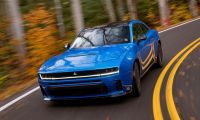
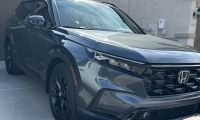
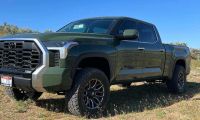
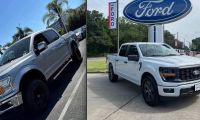
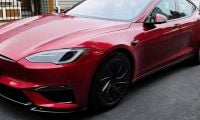
Comments
Regeneration is one of the
Permalink
Regeneration is one of the features that I really loved about my Chevy Volts, and still enjoy on my Cadillac ELR EREV plug in. I have steering wheel paddles to activate regen on demand, and I can put the shifter into L, which increases regen and activates when you let off the "gas" pedal. I live on a hill, so I gain between 4-7 miles of range just using the brakes before I get on the freeway. Of course I lose that added range and a bit more when I drive back up, but I would have lost more energy if I didn't have regen. Most of the time I don't use L or the regen paddles because just stepping on the brakes automatically adds power back into the traction battery. The extra bonus is that because most of the car's braking is done by regen my actual brakes are hardly used (but still always available by pressing the brake pedal harder). So effectively the life of the brake pads are extended to hundreds of thousands of miles, maybe even to the life of the car. Regen is one of the hidden benefits of modern EVs. It makes me feel good when I know that my braking energy is being converted back automatically into electricity, as opposed to normal brakes which always just lose that potential energy, converting it into heat and brake pad wear.
I have often heard the claim…
Permalink
I have often heard the claim that in order to take advantage of regenerating braking, one must use the One-Pedal mode (or the Paddle on the steering wheel). I have doubted this claim because just watching the KW display it is apparent that large amounts of power are stuffed back into the battery when applying the foot brake. Why would an engineer not take advantage of this existing feature by including the brake pedal in its use?
To test this, on Aug 15, 2023 I drove up Mount Equinox twice to test whether there is a difference between using the brake pedal and the One-Pedal mode. During the test of one-pedal mode I did not use the brakes at all on the way down. During the trip I tried to maintain a constant speed of between 20 and 23 mph. (Speed limit was 20 mph) The web site asserts that the Skyline Drive ascends 3,248 feet over 5.2 miles. Readings are from the car's console.
First I did the one-pedal mode:
At bottom: 11.2 KWh, 58.7 mi
at top : 17.1 KWh, 64.1 mi 5.9 Kwh consumed, 5.4 mi
at bottom: 13.6 KWh, 69.4 mi -3.5 KWh consumed, 5.3 mi;
13.6-11.2 = 2.4 Kwh for round trip
The second run in normal mode:
At bottom: 13.6 KWh, 69.4 mi
at top : 19.3 KWh, 74.7 mi 5.7 KWh consumed, 5.3 mi
at bottom: 15.8 KWh, 80.0 mi -3.5 KWh Consumed, 5.3 mi;
15.8-13.6 = 2.2 KWh for round trip
As you can see the way down the mountain the amount consumed was the same (-3.5 KWh).
But the way up varied by 0.2 KWh, even though the normal mode was used both times. I attribute this to probable internal rounding errors during both runs - the first rounded up, the second down. And it is the up trip that caused the overall KWh consumed to vary.
A few more trips would have been nice, but I was already pressing the hospitality of the mountain personnel who allowed me to travel twice on a single token.
I performed this test to document that there is not a difference between using the foot brake and the 0ne-Pedal mode when slowing. Both slow the car by collecting the car's kinetic energy and storing it in the battery. By extension, this also applies to the "Paddle" on the steering wheel, which places the car in One-Pedal mode while pulled. The test appears to show that there is no efficiency advantage to using the One-Pedal mode, just one of preference, but does not test a long slow light-braking situation.
Incidentally, and as an aside, if the car weighs 3900 lbs with driver and passenger and the assent is 3248 ft, then the kinetic energy stored at the top is 12,667,200 foot/lbs, or 4.77 KWh. (1 Watt/hr = 2655 ft/lbs)
3248 ft X 3900 lbs = 12,667,200 ft/lbs => (12,667,200 / 2655 ft/lbs) = 4,771 WHr
So the car appears to have consumed about 1 KWh more to climb the hill than calculated from the rise.
Chevy Bolt 1LT: 3,589 pounds
Rees Acheson
Alstead, NH, USA
In my reply wherein I…
Permalink
In reply to I have often heard the claim… by Rees Acheson (not verified)
In my reply wherein I reported the results of my test driving down Mt. Equinox, the last sentence contains an error. Instead of 1KWh it should say 1Wh, or one watt hour.
In other words, the power to climb the hill as recorded by the Bolt matches almost exactly the power calculated to raise the weight of car and driver up the hill. I find this remarkable. Engineering calculations based on guesses (vehicle weight), and ignoring variables such as friction seldom come out so perfectly. Not that it proves correctness, but rather that such a close coincidence might occur.
Rees Acheson